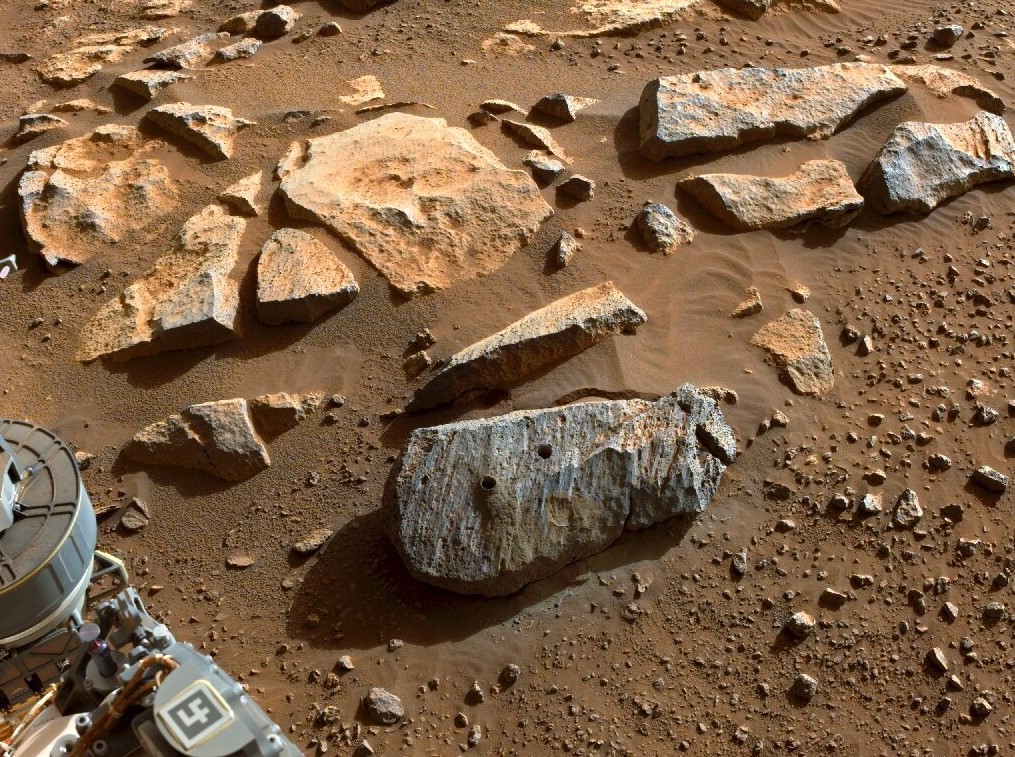NASA’s Perseverance rover has collected two rock samples that might support ancient life on our planetary neighbor.
The rocks were linked with water for a long period of time. Now, scientists believe that the new data support the case for ancient life on Mars even more.
Here is what you need to know.
An Intriguing Glimpse of Mars’ Past
Perseverance is NASA’s six-wheeled robot that made quite the history a few months ago thanks to its brave mission and milestones. The rover has collected its first sample, called Montdenier, on September 6, followed by another on September 8, dubbed Montagnac.
The samples, around 6 centimeters long and a bit wider than a pencil in diameter, have been stored in special sealed tubes in Perseverance’s tummy.
But how could the samples unveil a potentially habitable sustained environment on Mars?
More new data details
The rock from the first samples has a basaltic composition, much likely to result from lava flows. According to scientists, volcanic rocks possess some crystalline minerals that are essential for radiometric dating.
That could support scientists’ work a lot because it can offer a full view of a region’s geological history, including when a lake appeared and disappeared when a crater formed and how climate changed in time.
What’s more interesting is that the rocks could reveal key signs for sustained interaction with groundwater, as per scientists’ findings.

Katie Stack Morgan, a NASA geologist, released a statement:
“If these rocks experienced water for long periods of time, there may be habitable niches within these rocks that could have supported ancient microbial life.”
Moreover, the salt minerals trapped in the rock cores could also hold tiny bubbles of ancient Martian water. How great is that?
NASA aims to return the samples home for in-depth lab analysis in a daring joint mission with ESA sometime in 2030.























Leave a Reply